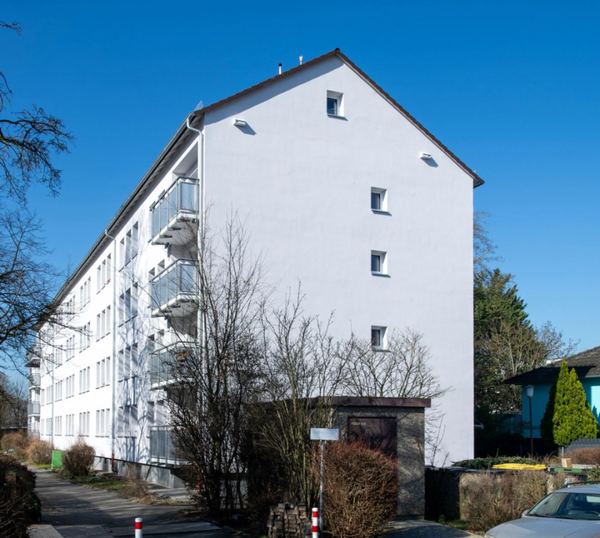What is the experience of living in a "recycled foam house"? German giants join forces to crack the code for reducing carbon in construction.
When a piece of discarded foam packaging was given a new lease of life on a construction site, it became an eco-guardian protecting the warmth of thousands of homes—a scene that might seem like science fiction but is a reality achieved by BASF, Sto, and ABG in Frankfurt. They have triggered a revolution in traditional building materials with just 10% recycled material. What green secrets does this experiment hold?
Rejected EPS foam transformed into the 'golden armor' of architecture.
In the Rhine-Main region of Germany, an old apartment building with 52 units is being covered with a special "coat": in the new type of insulation boards, 10% of the polystyrene (PS) is replaced with recycled EPS foam. These discarded materials, once regarded as "white pollution," are mechanically recycled and combined with graphite-containing Neopor® particles to form rEPS boards that perform on par with traditional products.
Technical breakthrough points
Graphite + recycled material dual enhancement: Graphite increases thermal reflectivity, while recycled material reduces the use of virgin plastic.
Equivalence performance certification: compressive strength, fire resistance, and market standards are fully consistent.
Carbon footprint reduction: Compared to traditional panels, a decrease of 1.2 kg of carbon dioxide emissions per square meter.
"Three parties work together to build a 'closed loop': from the laboratory to the exterior walls."
Behind this innovation is the "iron triangle" cooperation between BASF, Sto, and ABG that has lasted for decades.
BASF: Innovative development of Neopor® F5 Mcycled™ pellets, future plans to integrate construction waste.
Sto: Incorporating recycled boards into external wall insulation systems, aiming to increase the proportion of sustainable materials.
ABG: As a top-level residential association in Germany, the feasibility has been verified with 52 real renovation cases.
'The craftsmen fully feel no difference when installing it,' said Frank Junker, chairman of ABG. This statement reveals the key to the implementation of technology — environmental protection should not come at the cost of efficiency.
A Butterfly Effect of Heat-Insulating Board: Saving More Than Just Heating Costs
According to the EU Building Energy Efficiency Report, heating in buildings accounts for 40% of total energy consumption in Europe. This renovation project brings about a threefold chain reaction:
-
Household level: Winter heating costs are expected to decrease by 15-20%.
-
The environmental layer: The annual carbon reduction of a single building is equivalent to planting 300 trees.
-
Industry Level: Opening a new track for the annual processing of tens of thousands of tons of EPS waste.
More noteworthy is the bio-based Neopor® BMB material simultaneously launched by BASF, which has achieved a 30% reduction in carbon footprint by replacing fossil fuels with renewable raw materials. As project leader Dr. Frank Börner said, "This is not the end, but a new beginning for the circular economy."

Construction site waste will be tomorrow's resources.
When the pilot building in Frankfurt has passed its first winter test, a grander plan is unfolding:
Recycling rate upgrade: Technical breakthroughs for increasing recycled materials from 10% to 20% have been initiated.
Waste Type Expansion: From Post-Consumer EPS to Construction Site Offcuts
Standard System Construction: Promoting the Update of EU Recycled Material Certification Standards
Conclusion
This green revolution sparked by a heat-insulating panel demonstrates a trend: on the carbon neutrality track, there is no true "waste"; there are only resources in the wrong place. When tech giants join hands with upstream and downstream players in the industrial chain, perhaps one day, the buildings we live in will be constructed using materials from old buildings to create new ones.
【Copyright and Disclaimer】The above information is collected and organized by PlastMatch. The copyright belongs to the original author. This article is reprinted for the purpose of providing more information, and it does not imply that PlastMatch endorses the views expressed in the article or guarantees its accuracy. If there are any errors in the source attribution or if your legitimate rights have been infringed, please contact us, and we will promptly correct or remove the content. If other media, websites, or individuals use the aforementioned content, they must clearly indicate the original source and origin of the work and assume legal responsibility on their own.
Most Popular
-

List Released! Mexico Announces 50% Tariff On 1,371 China Product Categories
-

Dow, Wanhua, Huntsman Intensively Raise Prices! Who Controls the Global MDI Prices?
-

Clariant Unveils Cost-Cutting Plan Details, Plans to Shut Down Multiple Plants
-

New Breakthrough in Domestic Adiponitrile! Observing the Rise of China's Nylon Industry Chain from Tianchen Qixiang's Production
-

Nissan Cuts Production of New Leaf EV in Half Due to Battery Shortage






